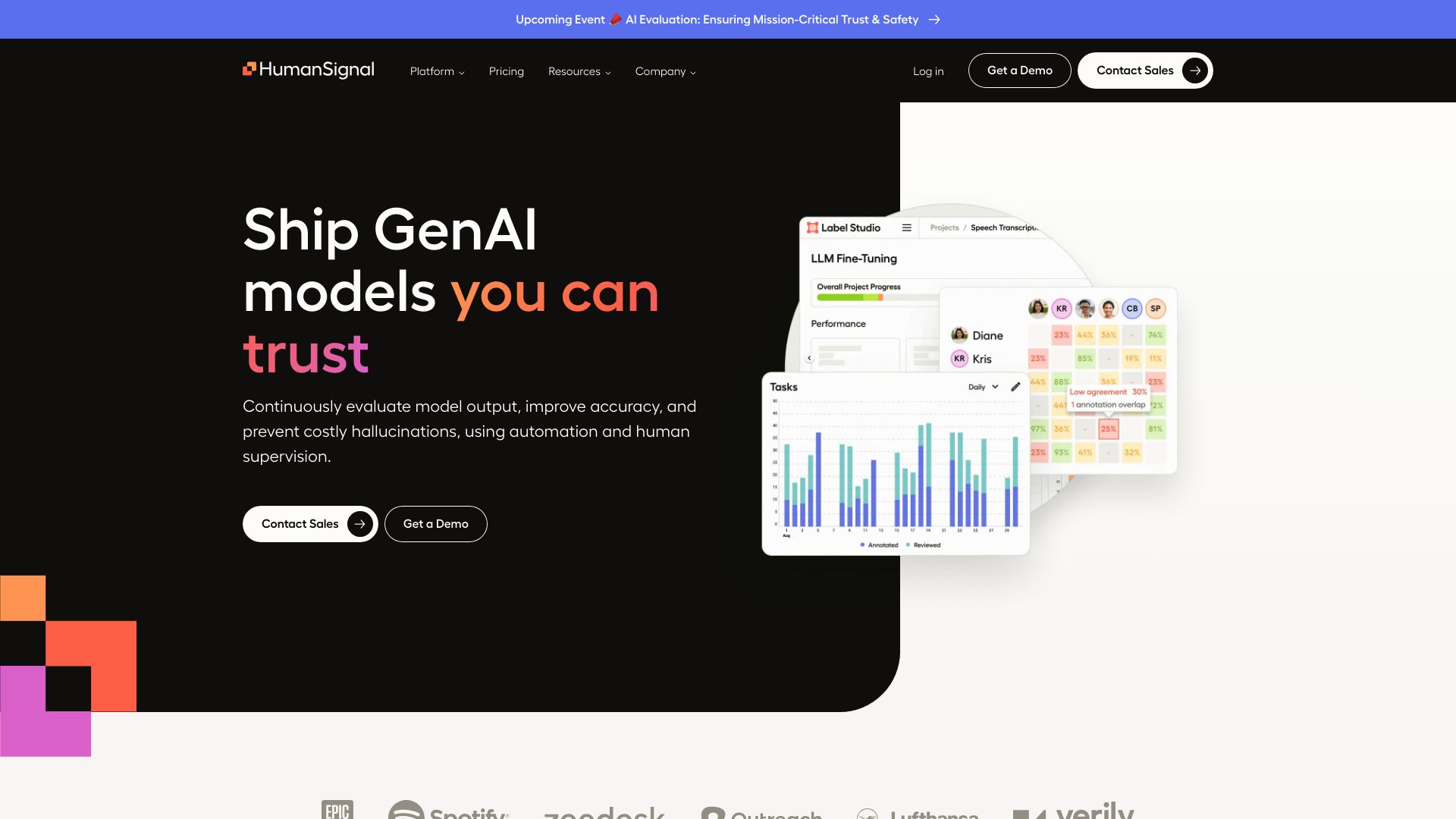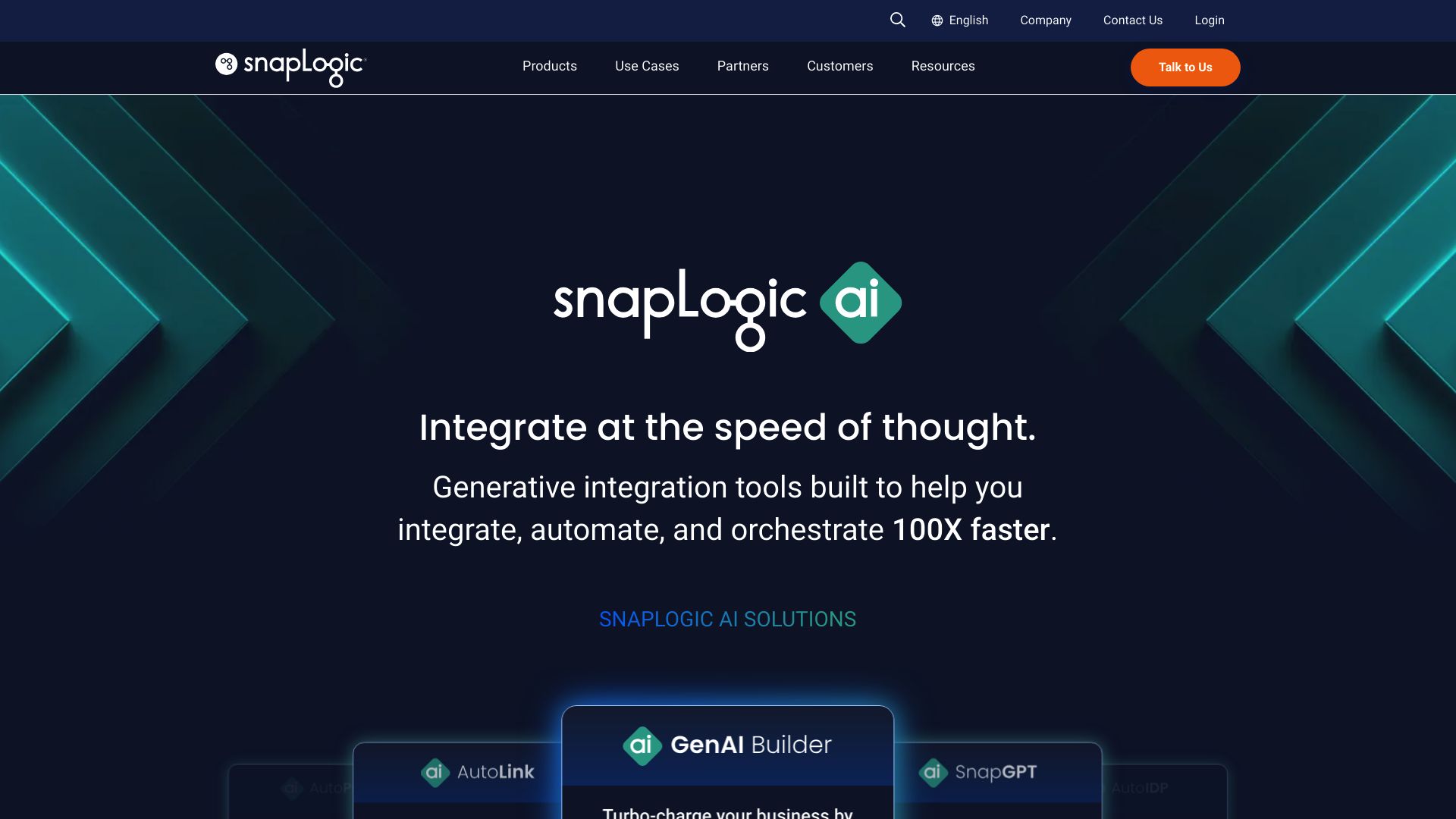Adala vs. snapLogic AI: Comparing AI-Driven Workflow Solutions
AI-powered solutions revolutionize data processing and system integration, empowering businesses to harness the full potential of their information assets. This comparison explores Adala’s open-source framework for building autonomous data labeling agents and snapLogic AI’s Intelligent Integration Platform, examining their unique approaches to AI-driven workflows.
We’ll delve into each platform’s core features, strengths, and limitations, helping you understand how they address critical challenges in data management and integration. By analyzing these innovative tools alongside SmythOS, we’ll provide insights to guide your decision-making process in selecting the optimal AI solution for your organization’s needs.
Adala Overview
Adala revolutionizes data labeling with its open-source framework for building autonomous AI agents. These agents learn specialized skills like text classification and summarization, continuously improving through interactions with data and human feedback. Adala leverages large language models as the core runtime, allowing agents to execute tasks with increasing proficiency.
Adala revolutionizes data labeling with its open-source framework for building autonomous AI agents… continuously improving through interactions with data and human feedback.


The platform’s modular architecture encourages community contributions, fostering an ecosystem of extensible skills and components. Adala’s agents learn from ground truth datasets provided by users, enabling guided training processes. A tight feedback loop incorporating human input ensures reliability and adaptability in labeling tasks.
While Adala excels in creating customized data labeling solutions, it lacks some features found in more comprehensive AI platforms. The absence of a visual builder or no-code editor means users interact primarily through code and APIs, potentially limiting accessibility for non-technical users. However, this approach allows for greater flexibility and control over agent behavior.
Adala’s focus on data labeling tasks makes it particularly valuable for organizations dealing with large datasets that require accurate and efficient processing. The platform’s ability to deploy multiple agents with different skills enables tackling complex data challenges through collaborative AI efforts. For developers and data scientists seeking to automate and improve their data labeling workflows, Adala offers a powerful, open-source solution that combines the strengths of AI with human-guided learning.
Adala’s focus on data labeling tasks makes it particularly valuable for organizations dealing with large datasets that require accurate and efficient processing.
snapLogic AI Overview
SnapLogic’s Intelligent Integration Platform (IIP) harnesses AI-powered workflows to streamline the entire lifecycle of IT integration projects. From design to maintenance, the platform caters to both expert integrators and citizen developers, enabling seamless management of application and data integration across on-premises, cloud, and hybrid environments.
SnapLogic AI leverages artificial intelligence to automate integration tasks, significantly reducing the time and effort required for IT projects. The platform’s Iris AI technology offers intelligent recommendations for building data pipelines with high accuracy, empowering users to create efficient integrations quickly.
SnapLogic AI leverages artificial intelligence to automate integration tasks, significantly reducing the time and effort required for IT projects.


The platform’s self-service interface, built with HTML5, provides an intuitive experience for users ranging from business analysts to IT professionals. This user-friendly approach democratizes integration capabilities across organizations, fostering innovation and efficiency.
SnapLogic supports a comprehensive range of integration needs, handling structured and unstructured data, as well as batch, real-time, and streaming data. The platform utilizes “Snaps,” pre-built integration connectors that simplify connections between SaaS applications, on-premises systems, and various data sources.
Scalability stands out as a key feature of SnapLogic’s offering. By leveraging Amazon’s Elastic Compute Cloud (EC2) infrastructure, the platform scales integration processes dynamically based on enterprise requirements. This elastic integration approach optimizes computing power consumption and data proximity, ensuring efficient operations regardless of workload.
SnapLogic supports a comprehensive range of integration needs, handling structured and unstructured data, as well as batch, real-time, and streaming data.
Recent additions to SnapLogic’s capabilities include SnapGPT and GenAI Builder, tools that enable no-code development of AI applications. These innovations allow employees to create AI models and chatbots using natural language prompts, further expanding the platform’s accessibility and potential use cases.
While SnapLogic offers a robust set of features, potential users should consider their specific integration needs and technical expertise when evaluating the platform. The learning curve associated with mastering the full range of SnapLogic’s capabilities may require some investment of time and resources, particularly for organizations new to advanced integration tools.
Feature Comparison
Adala vs. snapLogic AI offer distinct approaches to AI-powered workflows, with notable differences in their core components and security features. Adala focuses on autonomous data labeling agents, providing an open-source framework for building specialized AI agents. Its modular architecture encourages community contributions and extensibility. However, Adala lacks a visual builder or no-code editor, potentially limiting accessibility for non-technical users.
In contrast, snapLogic AI’s Intelligent Integration Platform caters to a broader range of integration needs. It provides a self-service interface with an intuitive HTML5-based design, making it more accessible to users across different technical backgrounds. snapLogic AI also offers more comprehensive security features, including data encryption and OAuth support, which are not explicitly mentioned in Adala’s capabilities. Additionally, snapLogic AI’s recent additions like SnapGPT and GenAI Builder enable no-code development of AI applications, a feature absent in Adala’s framework.
| Adala | snapLogic AI | SmythOS | |
|---|---|---|---|
| CORE FEATURES | |||
| Hosted Agents (Dev, Production) | ❌ | ✅ | ✅ |
| Visual Builder | ❌ | ✅ | ✅ |
| No-Code Options | ❌ | ✅ | ✅ |
| Memory & Context | ✅ | ❌ | ✅ |
| Debug Tools | ❌ | ✅ | ✅ |
| Multimodal | ❌ | ✅ | ✅ |
| Multi-Agent Collaboration | ❌ | ✅ | ✅ |
| Audit Logs for Analytics | ❌ | ✅ | ✅ |
| SECURITY | |||
| Data Encryption | ❌ | ✅ | ✅ |
| OAuth | ❌ | ✅ | ✅ |
| IP Control | ❌ | ✅ | ✅ |
| COMPONENTS | |||
| Foundation AIs | ✅ | ❌ | ✅ |
| Huggingface AIs | ❌ | ❌ | ✅ |
| Zapier APIs | ❌ | ❌ | ✅ |
| All other APIs, RPA | ❌ | ✅ | ✅ |
| Classifiers | ✅ | ❌ | ✅ |
| Data Lakes | ❌ | ✅ | ✅ |
| DEPLOYMENT OPTIONS (EMBODIMENTS) | |||
| Deploy as Webhook | ❌ | ✅ | ✅ |
| Staging Domains | ❌ | ❌ | ✅ |
| Production Domains | ❌ | ❌ | ✅ |
| API Authentication (OAuth + Key) | ❌ | ✅ | ✅ |
| Deploy as Site Chat | ❌ | ❌ | ✅ |
| Deploy as Scheduled Agent | ❌ | ✅ | ✅ |
| Deploy as GPT | ✅ | ❌ | ✅ |
| DATA LAKE SUPPORT | |||
| Hosted Vector Database | ✅ | ❌ | ✅ |
| Sitemap Crawler | ❌ | ❌ | ✅ |
| YouTube Transcript Crawler | ❌ | ✅ | |
| URL Crawler | ❌ | ❌ | ✅ |
| PDF Support | ❌ | ✅ | ✅ |
| Word File Support | ❌ | ✅ | ✅ |
| TXT File Support | ❌ | ✅ | ✅ |
Best Alternative to Adala and snapLogic AI
SmythOS stands out as the superior alternative to Adala and snapLogic AI for AI agent development and deployment. Our platform combines powerful features with unmatched ease of use, making it the ideal choice for businesses and developers seeking comprehensive AI solutions.
Unlike Adala’s limited focus on data labeling and snapLogic AI’s integration-centric approach, SmythOS offers a versatile AI operating system that enables rapid creation and management of sophisticated AI agents. Our intuitive drag-and-drop interface and extensive library of pre-built components democratize AI development, allowing users to build complex workflows without extensive coding knowledge.
SmythOS offers a versatile AI operating system that enables rapid creation and management of sophisticated AI agents.
SmythOS excels in its deployment flexibility, supporting a wide range of options including APIs, webhooks, chatbots, and scheduled agents. This versatility, combined with our robust security features like data encryption and OAuth support, ensures seamless integration into existing systems while maintaining data integrity.
Our platform’s strength lies in its comprehensive feature set. While Adala lacks visual building tools and snapLogic AI falls short in areas like multi-agent collaboration, SmythOS delivers on all fronts. We offer advanced capabilities such as memory and context management, debug tools, and support for multiple AI models, empowering users to create truly intelligent and adaptable agents.
SmythOS delivers on all fronts… empowering users to create truly intelligent and adaptable agents.
By choosing SmythOS, you gain access to a future-proof platform that continuously evolves to meet emerging AI challenges. Our commitment to user-friendly design, scalability, and ethical AI practices positions SmythOS as the go-to solution for businesses looking to harness the full potential of AI technology.
Conclusion
SmythOS emerges as the superior choice among Adala, snapLogic AI, and SmythOS for businesses and developers seeking comprehensive AI agent solutions. While Adala excels in specialized data labeling tasks and snapLogic AI offers robust integration capabilities, SmythOS provides a more versatile and user-friendly platform for creating and deploying AI agents across various use cases.
SmythOS’s drag-and-drop interface and extensive pre-built integrations democratize AI development, making it accessible to both technical and non-technical users. The platform’s support for multiple AI models, including those from OpenAI, Anthropic, and Hugging Face, coupled with its ability to deploy agents as APIs, chatbots, or scheduled tasks, offers unparalleled flexibility. This versatility allows businesses to seamlessly incorporate AI into their existing workflows and systems, driving innovation and efficiency.
For organizations looking to harness the full potential of AI, SmythOS stands out with its multi-agent collaboration capabilities, robust security features, and scalable architecture. Whether you’re a startup exploring AI possibilities or an enterprise seeking to transform your operations, SmythOS provides the tools and infrastructure to build, deploy, and manage AI agents effectively. To experience the power of SmythOS firsthand and revolutionize your approach to AI integration, create a free account today and start building your first AI agent.
Last updated:
Disclaimer: The information presented in this article is for general informational purposes only and is provided as is. While we strive to keep the content up-to-date and accurate, we make no representations or warranties of any kind, express or implied, about the completeness, accuracy, reliability, suitability, or availability of the information contained in this article.
Any reliance you place on such information is strictly at your own risk. We reserve the right to make additions, deletions, or modifications to the contents of this article at any time without prior notice.
In no event will we be liable for any loss or damage including without limitation, indirect or consequential loss or damage, or any loss or damage whatsoever arising from loss of data, profits, or any other loss not specified herein arising out of, or in connection with, the use of this article.
Despite our best efforts, this article may contain oversights, errors, or omissions. If you notice any inaccuracies or have concerns about the content, please report them through our content feedback form. Your input helps us maintain the quality and reliability of our information.
